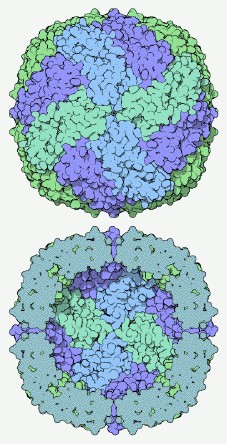Now that the 130 or so people who have downloaded the Moriarty/Phoenix debate about mechanosynthesis so far have had a chance to digest it, here are some thoughts that occur to me on re-reading it. This is certainly not a summary of the debate; rather these are a just a few of the many issues that emerge that I think are important.
On definitions. A lot of the debate revolves around questions of how one actually defines mechanosynthesis. There’s an important general point here – one can have both narrow definitions and broad definitions, and there’s a clear role for both. For example, I have been very concerned in everything I write to distinguish between the broad concept of radical nanotechnology, and the specific realisation of a radical nanotechnology that is proposed by Drexler in Nanosystems. But we need to be careful not to imagine that a finding that supports a broad concept necessarily also validates the narrower definition. So, to use an example that I think is very important, the existence of cell biology is compelling evidence that a radical nanotechnology is possible, but it doesn’t provide any evidence that the Drexlerian version of the vision is workable. Philip’s insistence on a precise definition of mechanosynthesis in distinction from the wider class of single molecule manipulation experiments stems from his strongly held view that the latter don’t yet provide enough evidence for the former. Chris, on the other hand, is in favour of broader definitions, on the grounds that if the narrowly defined approach doesn’t work, then one can try something else. This is fair enough if one is prepared to be led to wherever the experiments take you, but I don’t think it’s consistent with having a very closely defined goal like the Nanosystems vision of diamondoid based MNT. If you let the science dictate where you go (and I don’t think you have any choice but to do this), your path will probably take you somewhere interesting and useful, but it’s probably not going to be the destination you set out towards.
On the need for low-level detail. The debate makes very clear the distinction between the high-level systems approach exemplified by Nanosystems and by the Phoenix nanofactory paper, and the need to work out the details at the “machine language” level. “Black-boxing” the low-level complications can only take you so far; at some point one needs to work out what the elementary “machine language” operations are going to be, or even whether they are possible at all. Moreover, the nature of these elementary operations can’t always be divorced from the higher level architecture. A good example comes from the operation of genetics, where the details of the interaction between DNA, RNA and proteins means that the distinction between hardware and software that we are used to can’t be sustained.
On the role of background knowledge from nanoscience. A widely held view in the MNT community is that very little research has been done in pursuit of the Drexlerian project since the publication of Nanosystems. This is certainly true in the sense that science funding bodies haven’t supported an overtly Drexlerian research project; but it neglects the huge amount of work in nanoscience that has a direct bearing, in detail, on the proposals in Nanosystems and related work. This varies from the centrally relevant work done by groups (including the Nottingham group, and a number of other groups around the world) which are actively developing the manipulation of single molecules by scanning probe techniques, to the important background knowledge accumulated by very many groups round the world in areas such as surface and cluster physics and chemical vapour deposition. This (predominantly experimental) work has greatly clarified how the world at the nanoscale works, and it should go without saying that theoretical proposals that aren’t consistent with the understanding gained in this enterprise aren’t worth pursuing. Commentators from the MNT community are scornful, with some justification, of nanoscientists who make pronouncements about the viability of the Drexlerian vision of nanotechnology without having acquainted themselves with the relevant literature, for example by reading Nanosystems. But this obligation to read the literature goes both ways.
I think the debate has moved us further forward. I think it is clear that the Freitas proposal that sparked the discussion off does have serious problems that will probably prevent its implementation in its original form. But the fact that a proposal concrete enough to sustain this detailed level of criticism has been presented is itself immensely valuable and positive, and it will be interesting to see what emerges when the proposal is refined and further scrutinised. It is also clear that, whatever the ultimate viability of this mechanosynthetic route to full MNT turns out to be (and I see no grounds to revise my sceptical position), there’s a lot of serious science to be done, and claims of a very short timeline to MNT are simply not credible.
